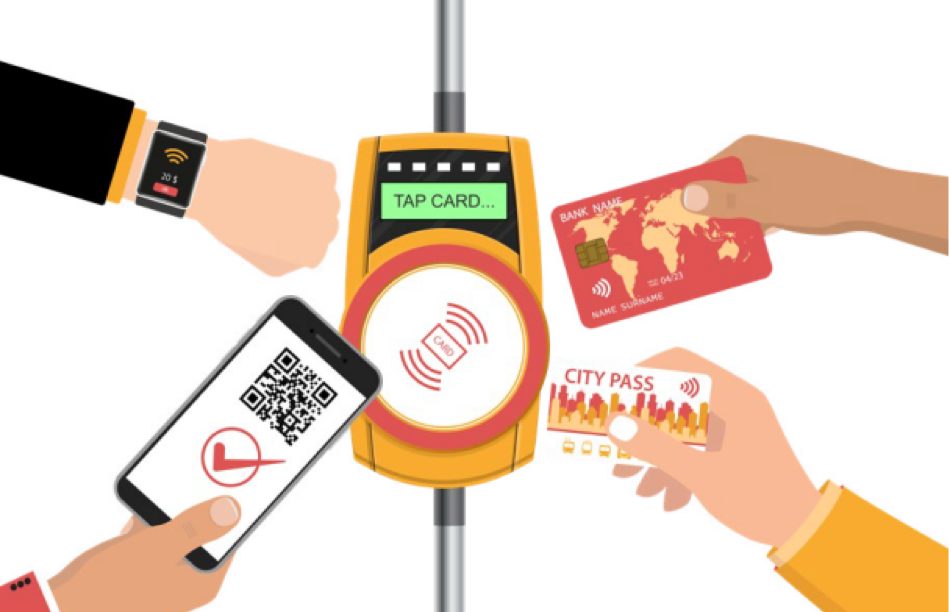Fare payment technology is evolving, and this fact sheet provides a snapshot of the state of the industry. Fare payments are the actual mechanism used by passengers to pay a fare; this differs from fare systems, which encompass the entire fare collection process. This includes the technology that calculates the fare type, paying the fare, and the verification of payment/access control process. The fare payment mechanisms covered in this fact sheet are contactless bank cards – Europay, Mastercard, and Visa (EMV) secure payment technology, mobile payments, and smart cards.
Technology
EMV: Contactless enabled bank cards or EMV – are cards that have a chip embedded and have a symbol that looks similar to a WiFi icon on the front or back of the card. The chip, in turn, allows for contactless payment transactions. Debit, credit, and prepaid cards enabled with EMV technology can also be stored in a digital wallet online accessible via computer, smartphone, smartwatch, tablet, or other smart devices. Individuals pay by tapping the card or device on a point-of-sale terminal, such as a validator on board a transit bus.
Mobile Payment: With mobile payments, the smartphone operates as a virtual card and can store multiple passes, fare types (e.g., flat fare, variable fare, etc.) or stored cash value. The rider selects a fare type and pays the fare using the smartphone. Mobile fare payments can be visually validated by the operator, by scanning the phone under a barcode scanner, or by holding it up to a proximity validator. Readers can be integrated with existing electronic fareboxes or be stand-alone units.
Smart Card: Smart cards are hard plastic cards, roughly the size of a credit card, enabled with a microchip or radio frequency identification (RFID) technology that allows the user to simply tap the card on a reader. Unlike with EMV cards, smart cards are specific to a transit system and can only be used to pay a transit fare.
Why invest in fare technology?
- Decreased fare disputes
- No need for exact change or making change
- Revenue security = reduces cash collected on board
- Allows individuals to pay fares without cash
- Allows for contactless payment
- Opportunities for incentivizing ridership with fare capping
- Increased data access and visibility into operations
- Easier revenue reconciliation = less staff time for counting cash
- Quicker boarding = improved schedule adherence
Benefits and Challenges by Technology
EMV
| Benefits | Challenges |
|---|---|
|
|
Mobile Payment
| Benefits | Challenges |
|---|---|
|
|
Smart Cards
| Benefits | Challenges |
|---|---|
|
|





